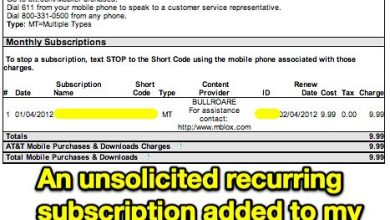Graphic Designer’s Guide to Project Management

Graphic design is a creative field often driven by innovation, visual storytelling, and aesthetic finesse. However, no matter how imaginative your designs are, meeting deadlines is crucial in this competitive industry. For graphic designers, project management involves striking a delicate balance between creativity and deadlines. Here’s a comprehensive guide to help you navigate project management while maintaining your creative edge.
The Importance of Project Management in Graphic Design
Project management is more than just meeting deadlines; it’s about delivering quality work efficiently while satisfying client expectations. Good project management practices help designers streamline workflows, maintain consistency, and minimize stress.
Effective project management improves efficiency by reducing time wastage and keeping the team focused on high-priority tasks. It also enhances client satisfaction through clear communication and managed expectations, leading to happier clients. Additionally, structured feedback loops ensure quality designs with minimal revisions, reinforcing the value of project management in delivering consistent and excellent outcomes.
Defining the Scope and Objectives
The first step in managing any graphic design project is to define the scope and objectives. Without a clear understanding of what the project entails, designers risk going off-track or facing scope creep.
The project scope outlines the project’s boundaries, deliverables, timelines, and constraints. Start with a detailed client brief to understand their requirements thoroughly. Ask probing questions about their brand, target audience, competitors, and design preferences. Clearly specify the deliverables, whether it’s a logo design, social media graphics, or website design. Outline the project milestones and final deadline while defining the project budget to avoid misunderstandings later.
Alongside defining the project scope, setting clear objectives and metrics to evaluate project success is crucial. For instance, if the objective is to create a modern logo for the brand, success metrics could include client satisfaction and logo versatility across different mediums. These clearly defined metrics help measure the impact of your designs.
Crafting a Realistic Timeline
Creating a realistic timeline is essential to balancing creativity and deadlines. Unrealistic timelines lead to rushed work and subpar quality.
Break down the project into phases and estimate the time required for each. Allocate time for researching the client’s industry, brainstorming concepts, and sketching ideas during the research and ideation phase. Estimate how long it will take to create initial drafts and refine them based on feedback during the design execution phase. Build in extra time for client feedback and revisions before finally allocating time for finalizing the designs and delivering the assets.
Including buffer time is crucial to accommodate unexpected delays like client indecision, additional revisions, or technical issues. Also, defining project milestones helps track progress. For example, presenting initial concepts could be the first milestone, followed by submitting revised designs after client feedback and then delivering the final designs as the last milestone.
Managing Client Expectations
Effective communication is key to managing client expectations. Building a transparent relationship with clients begins with a structured onboarding process that sets the tone for the project.
A welcome packet outlining your design process, timelines, and communication preferences is a great way to start the onboarding process. Hold a kickoff meeting to discuss the project scope, objectives, and timelines. This ensures everyone is on the same page from the beginning.
Keeping clients updated throughout the project is crucial. Schedule weekly check-ins to discuss progress and address any concerns. Involve clients in structured feedback loops at each milestone to avoid major revisions later. Providing guidelines for giving constructive feedback can streamline the revision process.
Managing revisions can be challenging but is necessary for project success. Minimize the number of revisions by clarifying the revision policy upfront. Limiting the number of free revision rounds and charging for extra rounds helps prevent clients from abusing the revision process.
Streamlining Workflows and Collaboration
Efficient workflows and collaboration are crucial for delivering quality work on time.
Using project management tools like Asana, Trello, or ClickUp can help organize tasks, deadlines, and communication. They enable designers to assign tasks, track progress, and meet project milestones effectively. Similarly, design collaboration tools like Figma, InVision, and Slack can streamline the design process. Figma allows real-time collaboration and feedback directly on the design, InVision enables interactive prototypes and centralized feedback, and Slack facilitates quick communication with clients and team members.
Developing standard operating procedures (SOPs) for recurring tasks ensures consistency and efficiency. Adopting a consistent file naming convention helps organize designs, while creating templates for frequently used designs like social media graphics or presentation slides saves time. Establishing style guides for colors, fonts, and layouts ensures brand consistency.
Balancing Creativity and Deadlines
Balancing creativity and deadlines can be challenging, but some strategies can help.
Implementing time management techniques like time blocking and the Pomodoro Technique can boost productivity. Time blocking involves dedicating blocks of time for focused work and minimizing distractions during these periods. The Pomodoro Technique involves working in 25-minute intervals followed by a 5-minute break, with a longer break after four intervals.
Prioritizing tasks based on importance and urgency is also essential. Using the Eisenhower Matrix to categorize tasks into urgent and important, important but not urgent, urgent but not important, and neither urgent nor important can help designers focus on high-impact tasks. Visualizing tasks using a Kanban board to track progress and identify bottlenecks further aids task prioritization.
Developing a structured creative process can maintain creativity while meeting deadlines. Creating an inspiration board with visuals, color swatches, and design trends helps ignite creative ideas. Scheduling brainstorming sessions for concept development and using mind mapping to generate and organize creative ideas provide a structured approach to creativity.
Handling Multiple Projects
Managing multiple projects simultaneously requires organization and discipline.
Prioritizing projects based on deadlines and complexity is the first step. Focus on urgent projects with approaching deadlines first, followed by high-value projects with higher revenue potential. Delegate tasks to team members or freelancers to balance your workload. Assign basic design tasks to junior designers to free up time for high-priority projects, and outsource specialized tasks like illustration or animation to freelancers.
Efficient resource allocation is also crucial. Using a resource calendar to track team availability and assign tasks accordingly ensures optimal utilization. Time tracking helps identify productivity gaps and optimize resource allocation.
Evaluating Project Success
Evaluating project success helps refine your project management approach.
Conduct a post-mortem analysis at the end of each project to identify what went well and contributed to the project’s success. Discuss challenges faced during the project and how they were resolved. Outline key lessons learned and how they can be applied to future projects.
Solicit feedback from clients to improve your services. Send out a survey to gauge client satisfaction and ask for testimonials if the client is satisfied with the work. Incorporate the lessons learned into your workflow by updating SOPs to reflect new best practices and refining workflows to address identified bottlenecks.
Conclusion
Mastering project management is crucial for graphic designers to balance creativity and deadlines. By defining project scope, creating realistic timelines, managing client expectations, and streamlining workflows, designers can deliver high-quality work efficiently. Implementing time management techniques, prioritizing tasks, and evaluating project success ensures continuous improvement. With these strategies, you can find harmony between creativity and deadlines while growing your design business.
Apart from that, if you are interested to know about Choosing the Right Software Development Firm then visit our Business category.





